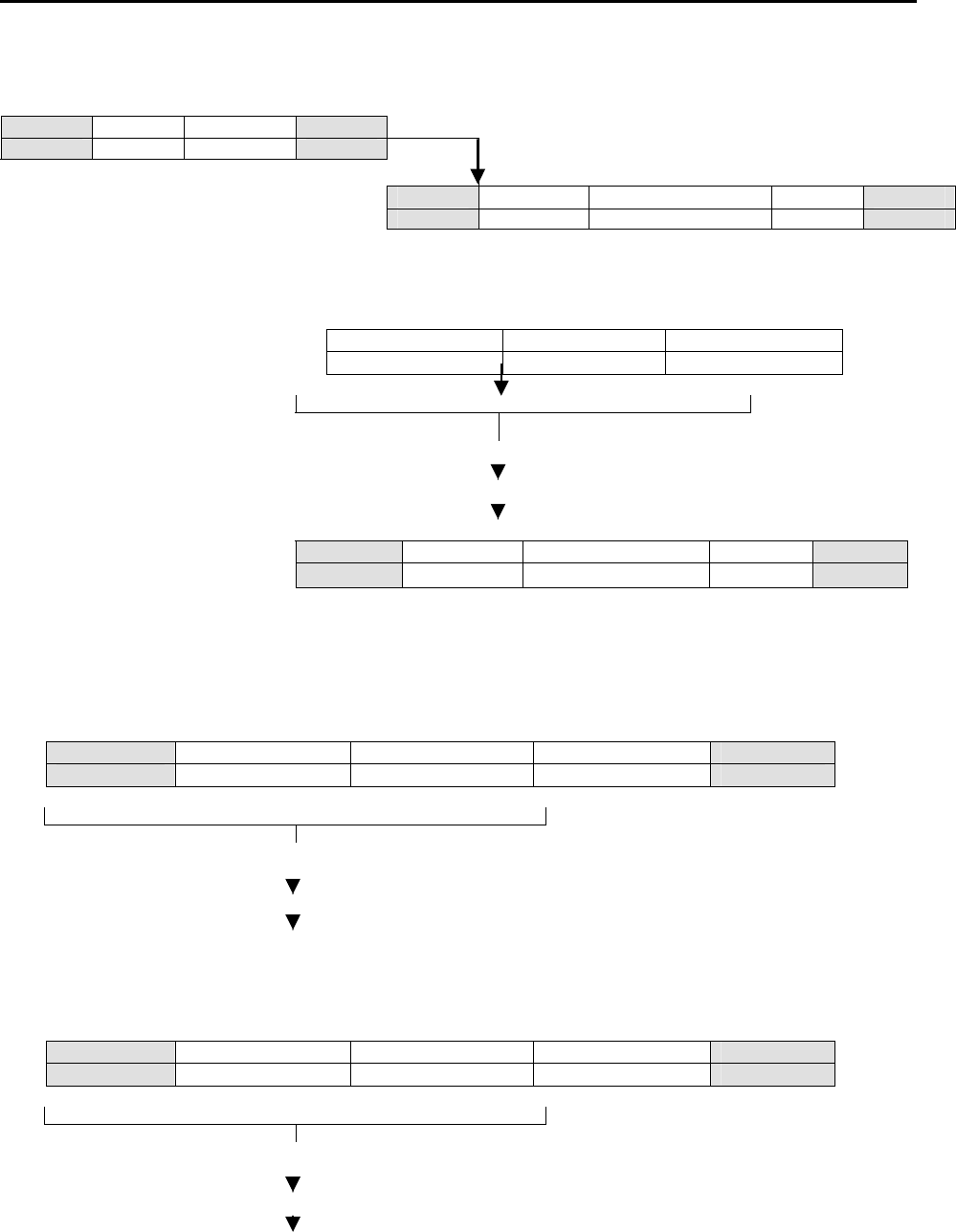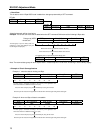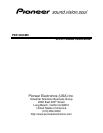
RS-232C Adjustment Mode
Check Sum
This is data to which 2-Byte ASCII code is added to a data group returned by a GET command.
PC side
STX ID
GET command
ETX
02 (hex) 2 Byte 3 Byte 03 (hex)
Set side
STX
GET command
Data
Check Sum
ETX
02 (hex) 3 Byte *Byte 2 Byte 03 (hex)
A detailed example will be given below.
Example: The Check Sum value that is added when the GET command GAA returned the following 6-Byte data.
Data group (ASCII)
GET command Data (6 Byte) Check Sum
+ check sum
GAA 100128 xx
(before calculation)
47 41 41 31 30 30 31 32 38
The data group is put in to binary code one
character at a time and displayed (only the
last two digits are displayed)
When these values are added the result is 1F8 (hex)
As the data format, F5 is converted to ASCII code and sent.
The following data is output from the plasma display side.
STX
GET command
Data
Check Sum
ETX
02 (hex) GAA 100 (missing data) 28 F5 03 (hex)
Note: The returned data group will be in capital letters. Please keep this in mind when introducing it into the binary display.
Example of Check Sum applications
Example 1: when the data is missing one Byte
STX GET command Data (6 Byte) Check Sum ETX
02 (hex) GAA 100 (missing data) 28 F5 03 (hex)
47 41 41 31 30 30 32 38
The data group is calculated according to the rules by a PC application and
when these values are added the result is 1C4 (hex).
Here, the check sum [F5 (hex)] and the calculated [C4 (hex)] do not match.
Since they do not match, the PC application sends the GET command again and gets the data again.
Example 2: when one Byte of data is unreadable
STX GET command Data (6 Byte) Check Sum ETX
02 (hex) GAA 100328 F5 03 (hex)
47 41 41 31 30 33 30 32 38
The data group is calculated according to the rules by a PC application and
when these values are added the result is 1F7 (hex).
Here, the check sum [F5 (hex)] and the calculated [F7 (hex)] do not match.
Since they do not match, the PC application sends the GET command again and gets the data again.
15


















